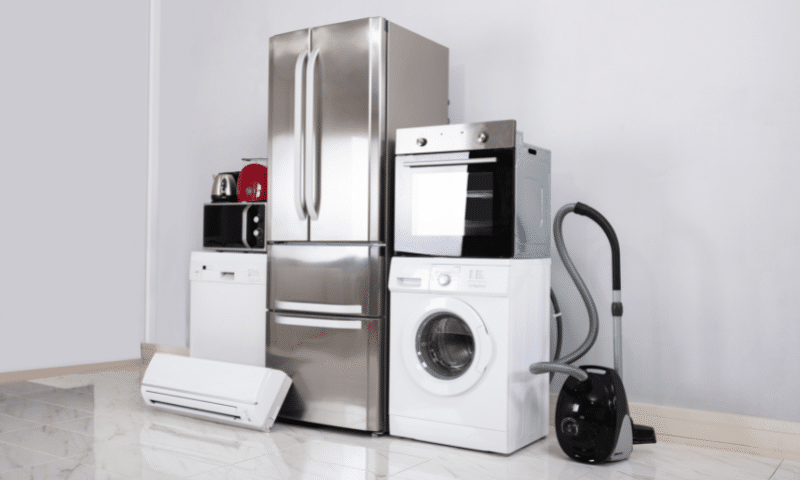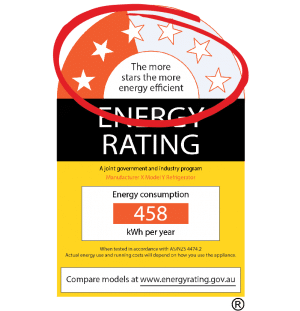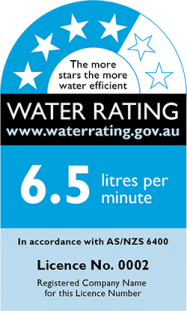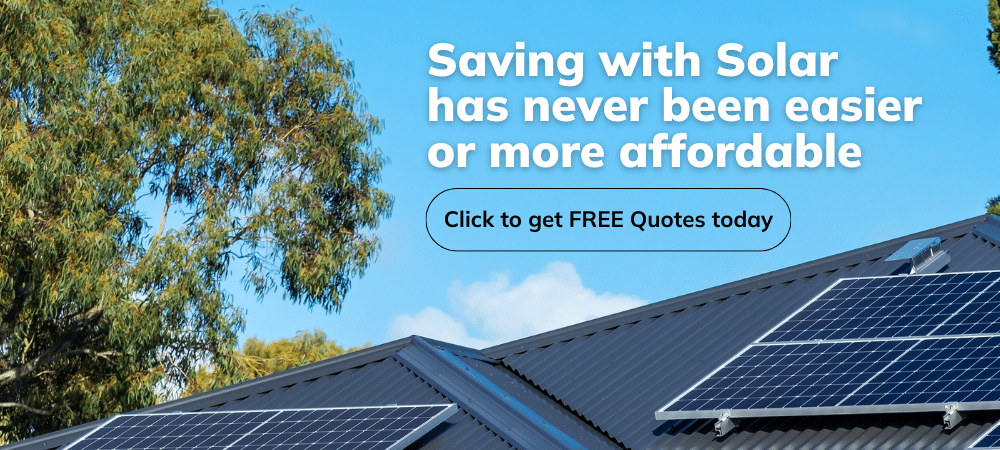Energy efficiency plays a critical role in reducing energy consumption, saving money, and protecting the environment. In Australia, energy efficiency ratings provide valuable information to consumers, helping them make informed decisions about household appliances and building designs.

On this page
n Australia, electricity, wood, and natural gas are the primary energy sources. Electricity provides around 50% of the energy used in Australian homes. Energy efficiency in the home makes financial sense; the more efficient your appliances, the more you save on energy costs.
To help homeowners reduce energy use and greenhouse gas emissions, various state governments launched energy efficiency programs. These initiatives were rolled out through electricity retailers.
Choosing the best renewable energy options for your home, such as solar power panels and solar hot water systems, can lower energy bills and benefit the environment.
All household appliances have energy ratings.
Energy consumption in Australia
Most electricity comes from the national grid and is generally produced by coal-powered plants – which produce the largest amount of greenhouse gases. These plants contribute significantly to global warming.
Australia’s energy sector was the largest and fastest growing source of greenhouse gas emissions.
Even with all the solar and other renewable energy we use, Australians are one of the highest per-capita greenhouse gas polluters in the world, and it is energy used in Australian households that is responsible for the biggest amount of greenhouse gas emissions.
Approximately one fifth of Australia’s total emissions come from homes, the equivalent of 15 tonnes per household per year. This includes everyday transportation and household waste which goes to landfill. (Source of statistics: Australian Greenhouse Office)
Australians can reduce their electricity related emissions by implementing smart home solutions, energy efficiency strategies and using renewable energy sources – and they are all closely related.
Choosing the most appropriate form of renewable energy for your home, such as solar panels and solar hot water will not only reduce your energy bills, but simultaneously help save the environment.
Smart homes and home automation
Read our guide to smart homes and learn how home automation can boost the energy efficiency of your house!
Home energy ratings
Appliances have energy ratings (see below for more about that). You may also want to discover how homes have energy ratings, too. See our home energy ratings page.
Save on solar power systems with energy efficiency
Even if you’re only partially powering your home with solar panels, greater energy efficiency means that solar power will contribute a greater amount of your electricity needs, reducing your power bills even further and maximising returns from feed-in tariffs.
One of the easiest methods to significantly lower the cost of a solar power system, or to raise the total proportion of electricity that solar power supplies in your home, is to reduce energy consumption. Here’s an example:
60 watt incandescent light globe x 8 hours a day = 480 watt hours
15 watt CFL bulb x 8 hours a day = 120 watt hours
700 lumen LED bulb x 8 hours a day = 64 – 96 watt hours
You can reduce the amount of electricity your solar power system needs to produce by 360 watt hours per day, the equivalent of an 80 watt solar panel, just by replacing one incandescent light globe with a similar intensity energy-efficient CFL. This can be done without sacrificing comfort or convenience. If you pick LED, the energy savings are considerably greater. The ban of new incandescent light bulbs in Australia from 2009 was projected to reduce greenhouse gas emissions by 800,000 tonnes, or 0.14% annually. The shift to CFL and LED lights has been a fantastic step in the right direction.
Swapping out high-energy using appliances for energy efficient alternatives is a great way to reduce your daily energy consumption.
Choosing appliances
The greatest strategy to cut your energy costs while minimising your environmental impact is to practice energy efficiency.
Certain electrical equipment, including fridges, dryers, and washing machines, must now have energy ratings in Australia. The star system is used and is an easy visual way to quickly compare appliances. The more stars, the more energy/gas/water efficient the appliance is. If you are comparing two appliances with the same stars, look at the numbers on the energy rating label. The lower the numbers, the more energy and/or money you save.


Electrical appliances are thought to account for approximately 40% of a household’s energy use. Remember to turn off appliances at the power outlet to reduce parasitic draw (the small amount of electricity used when your appliance is on standby) and save up to 10% on energy costs. The average Australian home uses 12 tonnes of energy per year. Read more energy-saving advice.
Additional details on particular appliance types
In Australia, the Energy Rating Label provides consumers with information about the energy efficiency of various appliances, enabling comparisons to make informed choices. The label typically features a star rating, where more stars indicate higher efficiency, and an energy consumption figure in kilowatt-hours (kWh) per year.
White goods
White goods, including refrigerators, dishwashers, washing machines, and dryers, represent a significant portion of household energy consumption. For instance, refrigerators account for approximately 8-10% of a household’s total energy use. According to the Energy Rating website, an energy-efficient refrigerator can save a typical Australian household about $120 per year in energy costs.
Choosing appliances with higher star ratings not only reduces energy use but also long-term costs. For example, a refrigerator with a 4.5-star rating can consume about 300-350 kWh per year, whereas an older, less efficient model might use more than 600 kWh, costing double the amount in electricity.
Dishwashers
Dishwashers are often seen as energy-hungry, but selecting an efficient model can save significant amounts. A 5-star rated dishwasher typically uses about 250-300 kWh per year, while a less efficient model might consume over 500 kWh annually.
For a household that runs a dishwasher daily, the savings from switching to an energy-efficient model could be around $60-100 per year depending on the usage and electricity rates in your area. Additionally, using the eco mode further optimises energy use, using up to 40% less electricity than standard cycles.
Washers and dryers
In Australian households, washing machines consume an estimated 5-7% of total energy use. A typical front-load washing machine with 5 stars uses around 150-250 kWh per year, while a top-loader can consume slightly more energy. The 5-star rated washer could save around $40-60 annually compared to older models.
Clothes dryers are much more energy-intensive. A dryer rated with 4 stars may use approximately 800-1,000 kWh annually, whereas an energy-efficient model could cut this down to 600-800 kWh, saving $50-80 per year in energy costs. Using a dryer in the off-peak hours and ensuring the load is optimised can also further save on electricity bills.
Hot water systems
Hot water systems are typically the second-largest energy consumer in Australian homes, often accounting for about 20-25% of household energy use. A gas or electric storage hot water system can cost upwards of $1,000 annually to operate.
Opting for a solar hot water system can result in significant savings. On average, a 4-star solar hot water system could save about $400-$500 per year on electricity bills, depending on the location and household usage. Heat pump systems, which are often rated highly for efficiency, can also save $200-$300 annually compared to traditional electric models.
Fridges and freezers
Refrigerators and freezers are major consumers of electricity, with the average fridge using 300-600 kWh annually. For example, a typical 4-star refrigerator might consume around 350 kWh per year, costing around $100-$150 in electricity bills. An older or less efficient model could use 600-800 kWh, leading to energy costs of up to $250 or more per year.
By upgrading to an energy-efficient model, Australian households can save about $100 per year on electricity costs. Fridges with 5 stars can lower energy consumption to 250-350 kWh, saving even more in the long run.
Lighting
Lighting can represent approximately 10-15% of a typical household’s energy consumption. The shift from incandescent bulbs to LED lights has seen massive energy savings in Australian homes. LED bulbs use about 75% less energy than traditional incandescent bulbs.
For example, replacing just 10 incandescent bulbs with LED bulbs can save around $150 per year on your electricity bill, depending on the wattage and hours of use. The average Australian household, by switching to LEDs, can save about $200 annually across all lighting fixtures.
Tips: Use dimmer switches where possible. Timers and sensors are recommended for outdoor lights. Switching off the lights when you are not home will also reduce your electricity bills and greenhouse gas emissions.
Heating
Heating systems, including electric, gas, and reverse-cycle air conditioners, are responsible for around 40-50% of energy use during winter months in Australian homes.
A reverse-cycle air conditioner rated 4-5 stars for heating typically consumes 2-4 kWh per hour of operation. For a typical home, using a reverse-cycle air conditioner for 4 hours per day over winter (approximately 3 months) can cost about $350-$450 in energy use. However, a 5-star rated reverse-cycle unit could reduce this to $300-$350, saving around $100 per season.
Opting for gas heating, while cheaper to operate than electricity in some areas, still consumes significant energy. A typical gas-powered heating system could use about 3-5 GJ per day of gas during the winter, costing approximately $1,000-$1,200 annually.
Air conditioning
Air conditioning can account for 30-40% of a household’s energy consumption during hot summer months in Australia. A typical split system air conditioner with a 5-star rating uses about 1.5-2 kWh per hour. Running the air conditioner for 6 hours a day during summer could cost around $250-$350 per month, depending on the energy efficiency and local electricity rates.
Upgrading to highly efficient systems or inverter air conditioners can reduce power consumption by up to 30%, potentially saving $100-$150 per year. Additionally, using the Zoned Energy Rating Label, which considers different Australian climates, can help you choose a model better suited to your environment, saving both energy and money.
Engage a specialist to improve energy efficiency
Making the switch to energy-efficient appliances and systems in your home can lead to significant savings. The Energy Rating Label is a great tool to compare and choose the most efficient products, helping Australian households reduce their energy consumption, lower utility bills, and contribute to sustainability. By choosing energy-efficient models for white goods, hot water systems, lighting, and air conditioning, you can save hundreds of dollars annually, all while reducing your environmental impact.
Whether you’re looking to replace your hot water system, replace your lighting, or install a solar PV system, we can connect you with trusted local solar installers who will provide you with up to 3 FREE quotes! Follow the prompts to receive your free quotes. The Solar Quotes quiz also covers other renewables, so get clicking today!













































